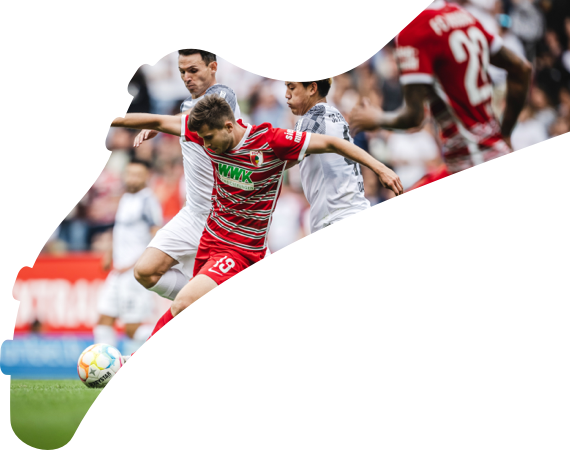
Goal-line technology to be used in 2015/16
Frankfurt am Main - At a general meeting of the League Association in December 2014, the Bundesliga clubs voted in favour of implementing goal-line technology from the beginning of the 2015/16 season onwards. The DFL Deutsche Fußball Liga GmbH chose computer tracking company 'Hawk-Eye' to provide the technology for use in Germany's top flight. But how does the system work?
Referee alerted; replay for spectators
Hawk-Eye uses six precision cameras and one high-speed camera for each goal, all of which are fitted to the stadium's roof. If the ball comes within the vicinity of the goal, images from each camera capture its movement and software calculates its exact position in real time from different angles, even if only a small part of the ball is visible.
As soon as the ball completely crosses the goal-line, the system sends an acoustic signal to the match referee's earpiece within one second, while his watch also vibrates and displays the message 'GOAL'. In order for that to happen, the software analyses images from all six cameras. The ball is located in each image and areas where it definitely is not located are excluded.
Within a few seconds an action replay, recorded by the special high-speed replay cameras fixed directly in line with the goal-line, is displayed for spectators in the stadium and on television screens. In these replays, the image in which the ball is shown to be furthest in the goal is filtered out.
New technology in stadiums
In total 14 new cameras will be installed in each stadium, either on roofs, access gangways or floodlight brackets. The cameras are linked to the television compound, where a van equipped with all the necessary technological equipment will be stationed on matchdays. Every weekend five vans will be used to cover all matches, while on the final two matchdays of the season nine vehicles will be used to cover the nine fixtures taking place simultaneously.
In each van will be two operators, who can be contacted at any time by the fourth official. The operators are important primarily in exceptional circumstances during a match, for example if a second ball enters the pitch, at which point they need to inform the system which is the correct matchball.
World leader in football tracking technology
Hawk-Eye, whose headquarters are based in Great Britain, are a long-established company and are currently worldwide market leaders in the field of ball-tracking technology. Owned by Sony since 2011, its software is predominantly known for being used at tennis Grand Slams but it has also been implemented in cricket and at the Olympic Games.
The English Premier League introduced the Hawk-Eye system at the start of the 2013/14 campaign to settle contentious decisions and it is now being used increasingly in professional football. Hawk-Eye is recognised the world over across a range of sports and has been used in different 230 stadia. Goal-line technology was used for the first time in Germany in the DFB Cup final between Borussia Dortmund and VfL Wolfsburg.


